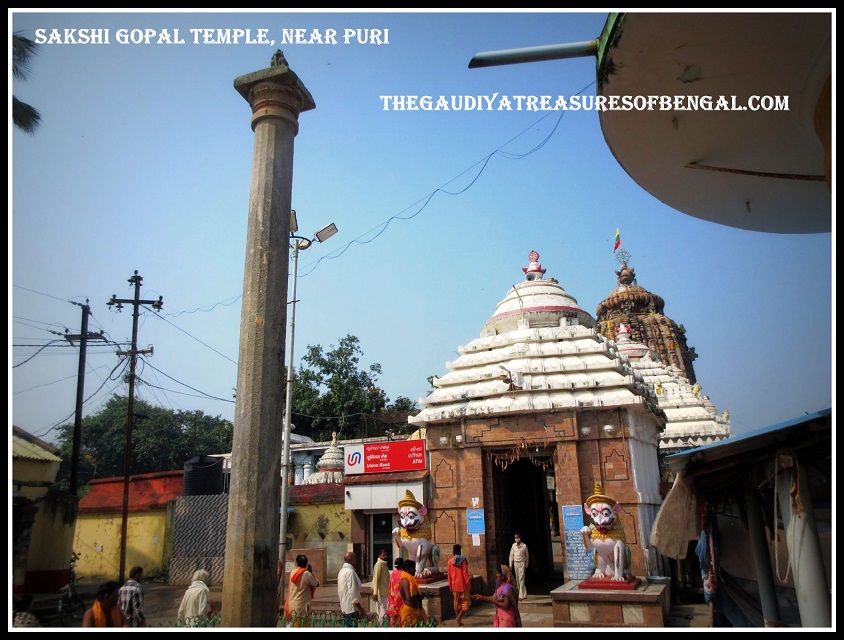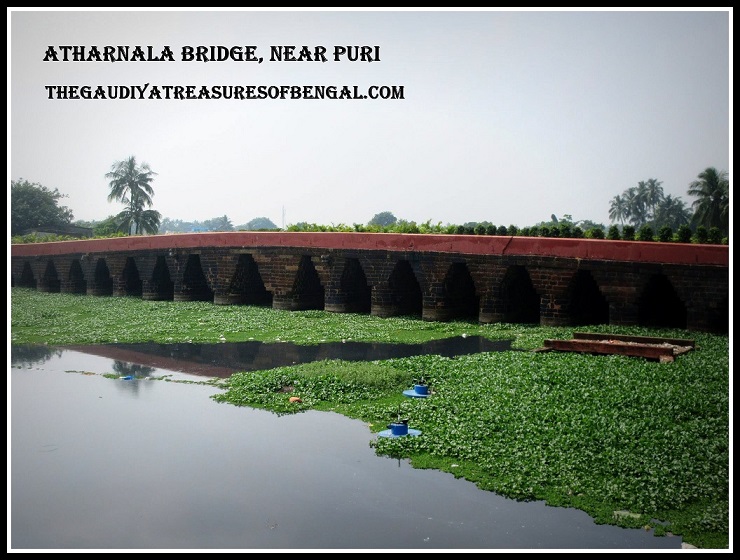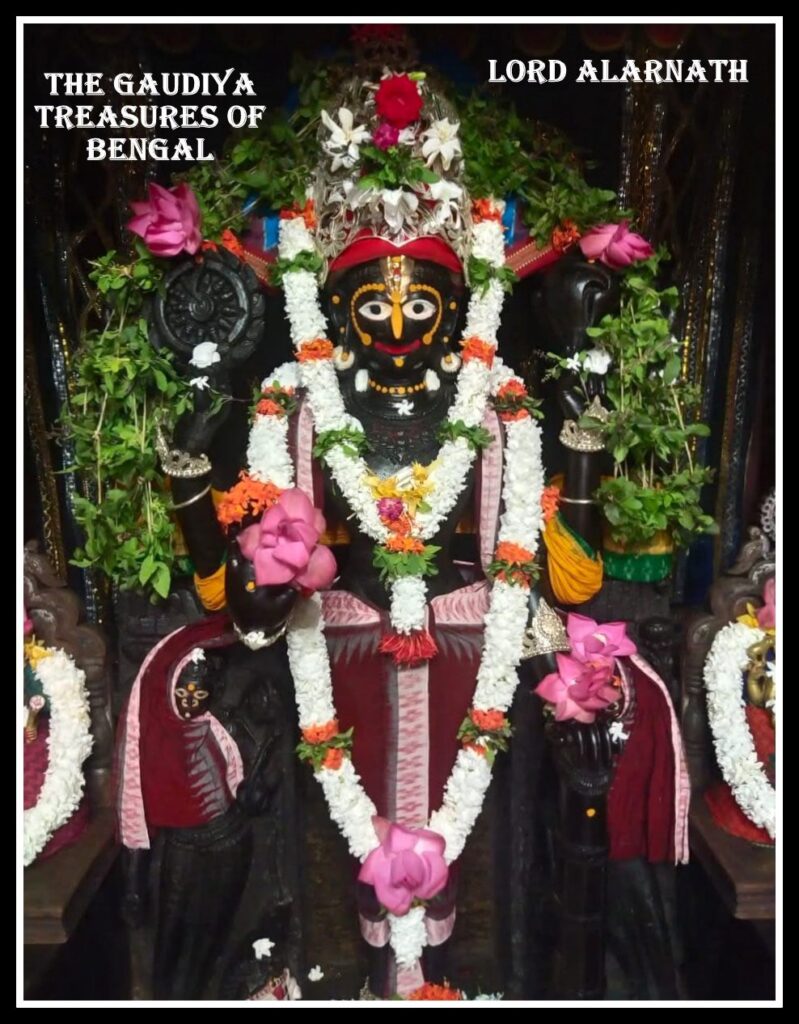
When Sri Chaitanya Mahaprabhu reached the town of Cuttack, He went to visit the temple of Sakshi Gopal. While there, Nityananda Prabhu narrated to Him the story of the enchanting deity. Once, there were two brahmanas who were residents of the town of Vidyanagar. One of them was elderly while the other was young. The two brahmanas made an extensive tour to see different places of pilgrimage. After visiting Gaya, Kasi and Prayag, they finally reached Mathura. Thereafter they saw Govardhan hill, the twelve forests, and finally arrived at Vrindavan. In the village of Panchakroshi in Vrindavan, there was a great temple where gorgeous worship of Gopal was conducted. After taking baths at the different bathing places across the Yamuna, such as Kesi Ghat, Kaliya Ghat, the two pilgrims visited the temple of Gopal. The beauty of Gopal enchanted their minds. They stayed for a few days. Later the older brahmana, being impressed with services rendered by the young one, promised to give him his daughter in marriage. The young brahmana was taken by surprise and exclaimed that such an arrangement was unusual as the elderly brahmana belonged to a rich aristocratic family while he, on the other hand, was without a decent education or wealth. Hence he requested the elderly brahmana to reconsider his words as the young brahmana was not a suitable bridegroom for his daughter. The young brahmana also warned the elderly brahmana that he had a large circle of family and relatives whom he should discuss before concluding. However, the elderly brahmana remained stubborn. He insisted that the young brahmana should accept his proposal. Thereafter, at the request of the young brahmana, the elderly brahmana promised in front of the deity of Sakshi Gopal, that he would give him his daughter in charity.



